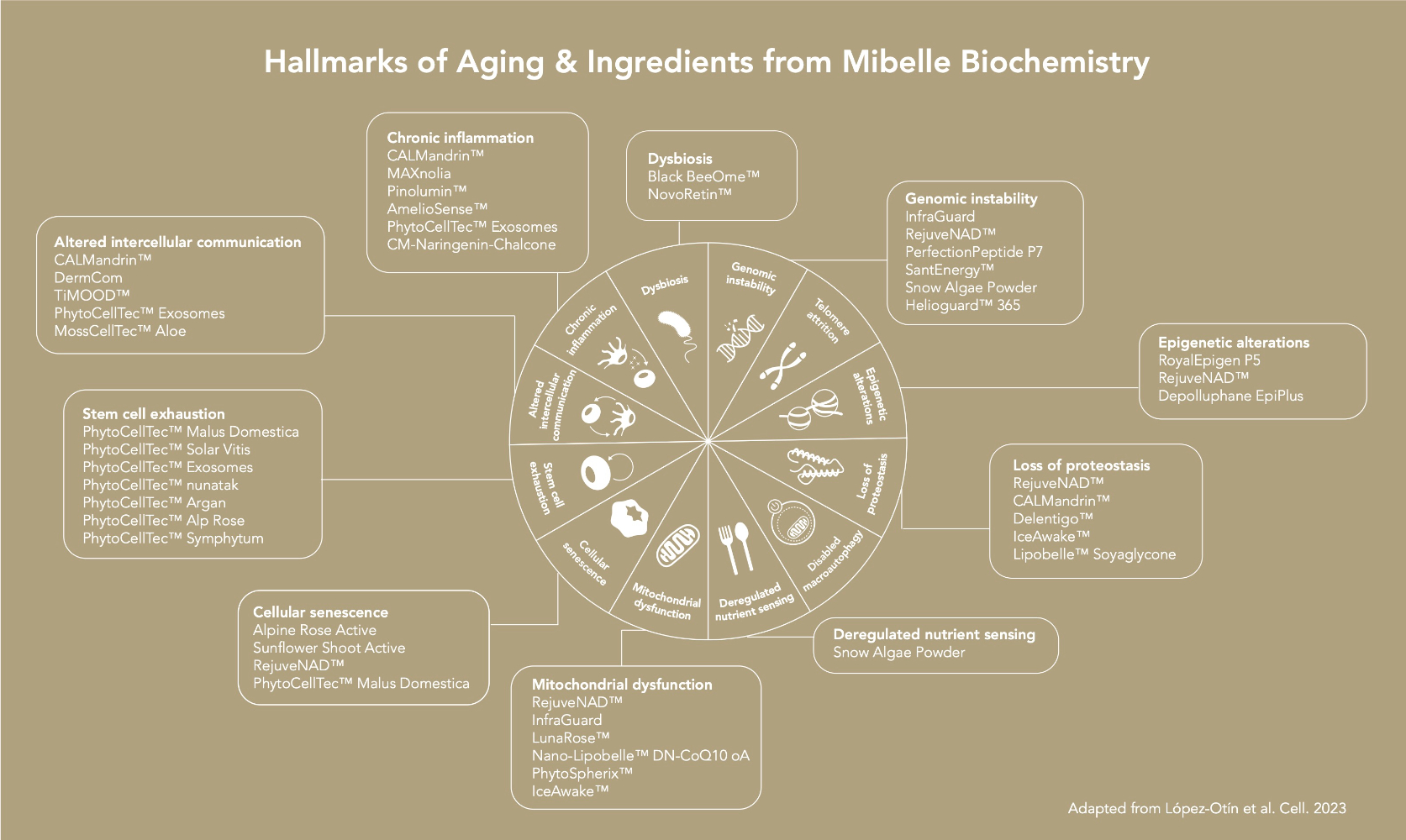Unravelling the Hallmarks of Aging
A Framework for Skin Health
Targeting the hallmarks of aging has become a significant focus in science, offering new opportunities to address age-related decline. Aging refers to the progressive loss of function and reduced capacity to recover from stress, influenced by environmental, genetic, and social factors. While aging manifests differently in individuals, at the cellular level, 12 interconnected biological processes—known as the “hallmarks of aging”—drive this decline.
First outlined by López-Otín et al. in 2013 and recently updated, these hallmarks are grouped into three categories:
- Primary causes of damage: genomic instability, telomere attrition, epigenetic alterations, loss of proteostasis, and impaired macroautophagy.
- Antagonistic processes, which initially protect against damage but can become harmful when dysregulated: mitochondrial dysfunction, dysregulated nutrient sensing, and cellular senescence.
- Integrative hallmarks, or the downstream effects of the primary and antagonistic hallmarks: chronic inflammation, altered intercellular communication, stem cell exhaustion, and dysbiosis.
These mechanisms are not only responsible for systemic aging, but also play a critical role in skin aging, and are further exacerbated by environmental factors, such as UV radiation and pollution. For example, genomic instability from UV exposure accelerates DNA damage, while oxidative stress from pollution damages proteins and lipids. Telomere attrition reduces skin cell renewal, leading to visible signs like wrinkles, and epigenetic alterations disrupt collagen production, while cellular senescence contributes to chronic inflammation, impairing skin elasticity and firmness.
Fortunately, lifestyle interventions can mitigate skin aging.
Sun protection prevents DNA damage, while a diet rich in antioxidants supports cellular health. Furthermore, skincare actives can counteract these processes. Mibelle Biochemistry has created a portfolio of ingredients that tackle the hallmarks of aging. This portfolio not only addresses visible signs of aging but also targets the cellular mechanisms that drive these changes. For example, our PhytoCellTec™ line counteracts the exhaustion of the stem cells pool in aging cells, while ingredients such as CALMandrin™ show a simultaneous beneficial effect against multiple hallmarks. In addition, emerging innovations like RejuveNAD™ show promise in addressing mitochondrial dysfunction and protein quality.
Skin aging reflects systemic aging, making it a visible marker of overall health.
By understanding and targeting the hallmarks of aging, we can not only improve skin’s barrier, elasticity, and firmness but also promote better aging overall.
Take the first step toward healthier skin by exploring solutions that address aging at its root, because vibrant skin starts at the cellular level.










